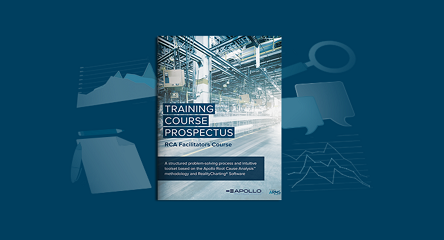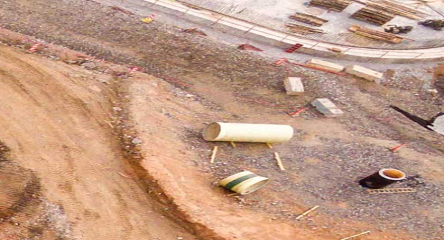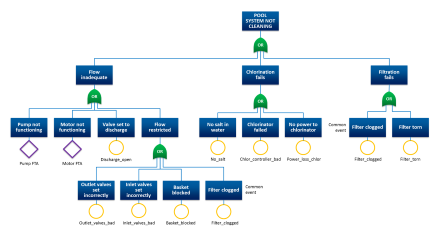Often when talking with Maintenance and Reliability professionals, a popular topic of discussion is how frequent a particular inspection task should be performed. This also comes up often when discussing Preventive Maintenance Optimization (PMO). In this post, I’d like to present a risk-based approach to calculating the proper frequency of a On-Condition Inspection task.
Let’s start with the P-F Curve. Without going into too much detail now (maybe in a later post), let’s assume we are dealing with the P-F Curve shown below. In this case, the depth of remaining tread on a tire is used as an indication of tire condition (y-axis) and the time the tire is in use is shown on the x-axis. We can see that the manufacturer has defined a tread depth range that is still safe, but planning for a tire replacement should occur (Replace Soon). If we can measure the rate at which a tire in our application will wear, we can construct the P-F Curve by plotting the measured tread depth by the number of miles the tire has been driven. For the sake of this example, let’s assume that the number of miles that it takes to wear away 1/32″ of tread is equal to one year. This would now become the amount of time within the yellow area in the P-F Curve below and is commonly called the P-F Interval.

Some articles and books I’ve read say that in order to determine the proper inspection interval, the P-F Interval is split in two or three smaller intervals. If we did this, we would schedule the tire tread depth check to happen every 4-6 months.
This inspection rationale is built on the assumption that as long as you check the tread depth once or twice within the P-F Interval, you will be aware that the tire needs to be replaced soon. But what if the inspection is difficult to perform or the consequence of missing the inspection is very severe?
Let me introduce two new variables, Pdet and Psuccess. Pdet is the probability that the inspection will positively detect (and correct if necessary) the condition you are looking for. In other words, if the chance that you will be able to properly access and measure the tread depth as well as perform the tire change itself if the depth is unacceptable is very good, you may estimate a Pdet of 95%. Psuccess is a little harder to describe, but it can be thought of as the level of confidence necessary that the functional failure will not occur. In other words, if the consequence of not changing the tire in time is very bad, you may estimate a need for a Psuccess of 95%.
As shown below, if the task is only performed once during the P-F Interval, the Pdet (probability of properly detecting the issue) will be equal to the Psuccess (probability the failure will be avoided). If you perform the inspection only once during the P-F interval and you estimate the chance of detecting the shallow tread condition and fixing it correctly as 95%, then you are 95% confident that the tire going bald and the car losing traction can be avoided.

The diagram below shows what happens if you increase the number of times the inspection occurs. As you can see, if the number of times the inspection occurs during the P-F Interval increases from once to twice, you can increase the confidence that the functional failure can be avoided.

To some this may seem obvious and intuitive, but I know from experience that this level of consideration is rare. If your goal is to determine the number of times that an inspection should occur during a P-F Interval in order to ensure a certain level of confidence that the maintenance action will correct the undesirable condition, trial and error using the formula above can work. Or with a small amount of mathematical manipulation, the formula below can be determined. Then, by using estimates for Pdet and Psuccess the entire chart below the formula can be built.


Now that you are armed with the chart above, make your own estimates of Pdet and Psuccess for your situation and determine how many times the inspection should occur in order to ensure successful failure avoidance. To turn this into a new maintenance interval, divide the number of smaller inspection intervals you want within the larger P-F Interval (n+1 from chart above) into the width of the whole P-F Interval. For example, if I wasn’t too confident that my tire inspection and follow-up repair would catch a bald tire and the consequence of a bald tire is severe, I might estimate Pdet to be 75% and Psuccess to be 95%. From the chart, the combination of the two variables lead us to n=3 (three inspections within the P-F Interval). If the P-F Interval is one year, then the inspection would be every 3 months [12 months / (3 + 1) = 3 months]. This will ensure that the inspection is completed three times within the four month P-F Interval.
Thoughts and comments are welcome and encouraged!!










